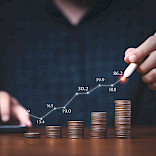Since 1990, he has also written 161 memos to his clients. These memos are not published regularly but rather according to market conditions and, I imagine, the author’s inspiration: in 2020, the year of the coronavirus pandemic, he wrote 12; in 1997, only one.
To celebrate 35 years of writing his memos, Marks recently republished the 45 he considers the best: The Complete Collection.
I’ve read several of them (not all, since the document is 492 pages long!). Reading them is an excellent way to relive the stock market history of the past 35 years. Perhaps it will help you avoid, as much as possible, the pitfalls that inevitably line an investor’s path?
In the coming weeks, I plan to revisit some of the memos I consider most relevant for today’s investor.
I chose to begin with the one Mr. Marks published on January 2, 2000, titled “bubble.com.” In this memo, Marks compares the late 1990s tech bubble to the “South Sea” bubble of the early 18th century, which was well documented in Edward Chancellor’s book Devil Take the Hindmost. At the time, the British company had obtained a monopoly on trade with the Spanish colonies in South America and the exclusive right to sell slaves there.
It may be worth spending more time on this memo, as it seems to me that the period of 2000 is strikingly like that of today. As I’ve said before, replace the words “Internet” or “e-commerce” from 2000 with “AI” or “quantum,” and the comments from 2000 apply just as well to 2025. Marks points out several parallels between the tech bubble (which had not yet burst at the time of publication) and the South Sea bubble. He writes: “In short, I find the evidence of an overheated, speculative market in technology, Internet and telecommunications stocks overwhelming, as are the similarities to past manias.”
Here are the parallels Marks identified between the South Sea bubble and the 2000 tech bubble (you can decide for yourself whether they apply to today’s situation):
Changing the world
Remember, in the late 1990s, it seemed obvious that the Internet was a revolution that would change the world. On this point, Marks wrote: “I have absolutely no doubt that these movements are revolutionizing life as we know it, or that they will leave the world almost unrecognizable from what it was only a few years ago. The challenge lies in figuring out who the winners will be, and what a piece of them is really worth today.”
Over the centuries, other technologies have also had the potential to change the world (from radio to automobiles to airplanes), but that doesn’t mean these industries made shareholders who bet on the pioneers rich. It’s easy to overpay for companies that have the potential to change the world.
Altered lives
In 2000, thousands of Americans (and Canadians) had quit their full-time jobs to become “day traders.” Twenty-five years later, I suspect this phenomenon is becoming popular again, even though I can’t find statistics that clearly demonstrate it.
In 2000, Marks wrote: “The pressure to move toward the high-change areas is great, and people are succumbing.” I believe a similar phenomenon is happening today with stocks related to AI and quantum computing.
The lure of venture capital and the role of the IPO
I’ve decided to combine these two factors because they seem to go hand in hand today. A single chart, in my view, explains what we are seeing in the markets, even if it differs from the strong wave of IPOs during the tech bubble and the extraordinary returns for private equity firms that owned private companies going public at that time:

This page comes from Yahoo.com’s stock market review. The site began providing such information in March 2025. As Marks wrote in 2000: “In my experience, the big, low-risk profits have usually come from investments made at those times when recent results have been poor, capital is scarce, investors are reticent and everyone says “no way!” Today, great results in venture capital are in the headlines, money is everywhere, investors are emboldened and the mantra is ‘of course!’”
How will the companies make money?
In 2002, Marks wondered: “Many of the new firms have great ideas for making money, but it's appropriate to wonder whether they'll work, how the competition in each “space” (that's the dot-com term for a business niche) will develop, whether profits will materialize, and whether they'll be sufficient to justify today's stock prices.” It seems to me the same questions apply to many of the companies attracting speculators’ attention today.
The ability to innovate does not always translate into the ability to generate profits.
How much are the companies worth?
On this topic, Marks wrote: “It's not enough to buy a share in a good idea, or even a good business. You must buy it at a reasonable (or, hopefully, a bargain) price.”
I’ll mention just one example that illustrates well what we are seeing in the markets today. Palantir Technologies, a favorite among investors eager to participate in AI, now has a market capitalization approaching US$450 billion. Its projected 2025 revenues are US$4.2 billion. That means the stock trades at about 108 times expected revenues. In English, I’d call that valuation “dot-com-like”!
Marks concludes his memo by saying: “Eventually, though, valuation has to matter.”
Next week, I’ll continue reviewing the memos I consider most relevant among the 45 selected by Howard Marks.
Philippe Le Blanc, CFA, MBA
Chief Investment Officer at COTE 100
_______






